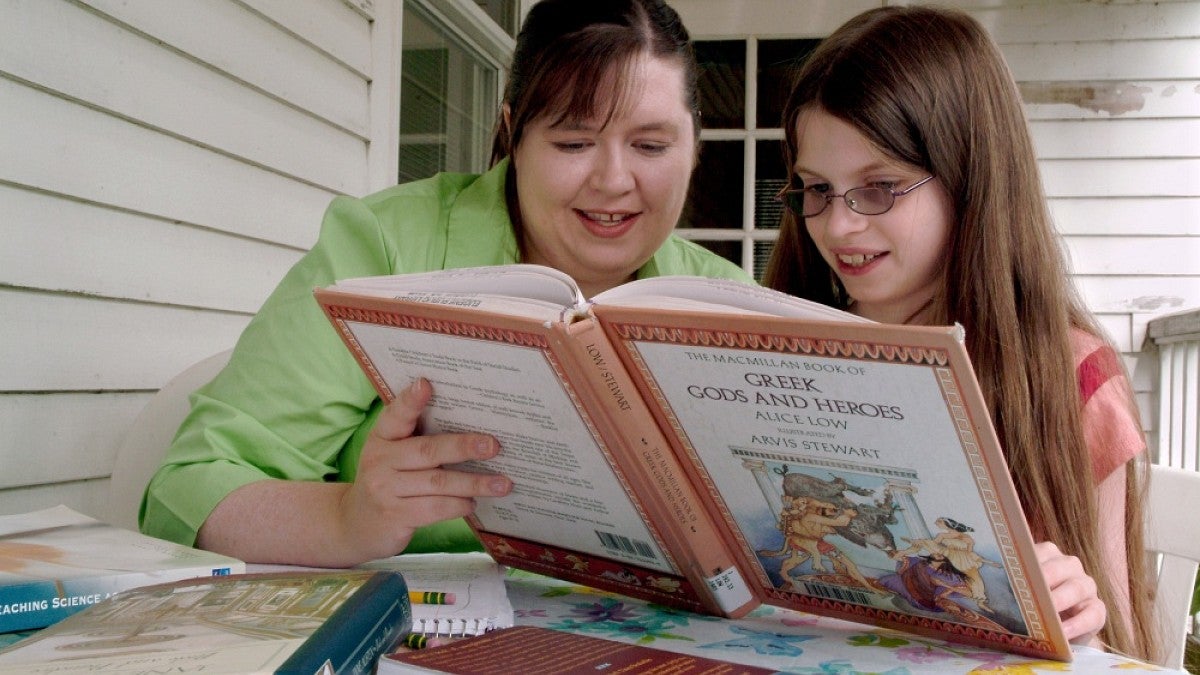A new center at the UO’s College of Education is in the spotlight after being included in a national network that will help schools improve teaching methods and policies in a range of topics.
The newfound attention comes after the National Center on Improving Literacy, an arm of the college’s Center on Teaching and Learning, was highlighted in the U.S. Department of Education’s Comprehensive Center Network. The network’s website launched in June and brings together more than 700 resources developed by 23 topic-specific centers across the country.
The literacy center was started last year and has since been named one of the federal network’s eight content centers. Each content center offers policy resources in areas such as boosting productivity, preparing for college and careers, providing support to teachers and leaders, and developing assessment tools and standards.
The literacy center “is the first comprehensive content center that focuses squarely on improving literacy outcomes for students who have historically not attained full literacy skills,” said Hank Fien, director of the center. The center’s work is geared toward students with reading difficulties and disabilities, including dyslexia.
“It’s an honor to be a part of the network, and our inclusion in the network is based on decades of translational research work conducted in the UO College of Education,” Fien said.
Since the 1980s, faculty members in the college have been at the forefront of research in developing literacy-related tools and technology. The literacy center brings the research, staff and faculty together, while the network will amplify their innovative work.
“Our world-renowned faculty have been developing the research base to improve outcomes for students with disabilities,” Fien said, “and now we have the opportunity to scale up this knowledge base through the NCIL.”
The literacy center officially launched last October and is a partnership between literacy experts, university researchers and technical assistance providers at Florida State University and New Hampshire-based RMC Research Corporation, with the UO playing a leading role. The UO’s special education and school psychology faculty are also major contributors to the center’s work.
“Over the last 15 years or so, there’s been lot of work at the UO and FSU and with some of our partners to develop and test screening and identification methods, and to develop effective and efficient early intervention approaches,” Fien said. “We know lot more than we did 15 years ago, but there’s still a lot more we don’t know, in particular how best to support older students with more protracted reading difficulties and disabilities.”
The federal network’s launch is timely for the UO program. In the past five years, 40 states have developed new legislation mandating screening, identification and early intervention programs and support for students with dyslexia. The network will make it easier for them to access the resources they need to meet those requirements.
“School districts in all 50 states are scrambling about how to do that, and they’re looking at our national center as a platform,” Fien said, citing a jump in the center’s website traffic of several thousand users each month .
Nancy Nelson, a research assistant professor in the College of Education and a UO alumna, leads the professional development and technical assistance team at the literacy center. Its focus is on supporting state education agencies, technical assistance providers and other stakeholders serving students with or at risk for literacy-related disabilities, including dyslexia.
“We’re currently working with several states across the country to develop and refine resources and methods to support implementation of evidence-based literacy practices in schools and classrooms,” Nelson said. “These resources will be disseminated broadly in ways that we hope will effectively address the needs of students struggling to learn to read.”
Students with reading disabilities make up 80 percent of all disability groups in schools, and current estimates suggest close to 20 percent of the entire student population have mild to severe forms of dyslexia.
“We’ve got our work cut out for us,” Nelson adds.
Another high-profile part of the center is its online, searchable database of literacy-related websites, downloads and videos from vetted sources. The site includes research summaries and infographics, as well as an interactive map that lets users explore dyslexia legislation and related initiatives around the country.
Also, an online tool allows users to submit literacy-related questions to be answered by experts who are leaders in the field of dyslexia and similar disabilities.
“It’s a dynamic and challenging task to curate the most rigorously based research materials for schools and families while keeping abreast of all the new research coming out every day that we translate for researchers, policymakers, teachers and parents,” said Jessica Turtura, a research faculty member who co-leads the literacy center’s dissemination team and manages its website with Brian Gearin, a doctoral candidate in the college. “However, it’s a challenge that we are up to.”
—By Jim Murez, University Communications


